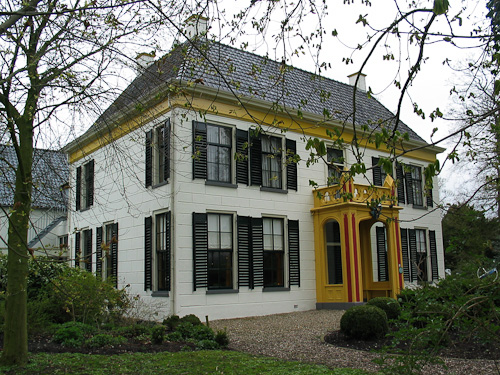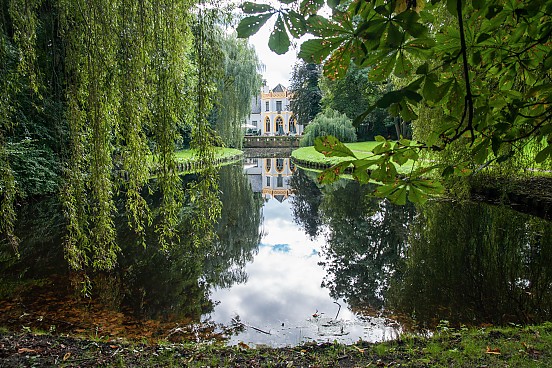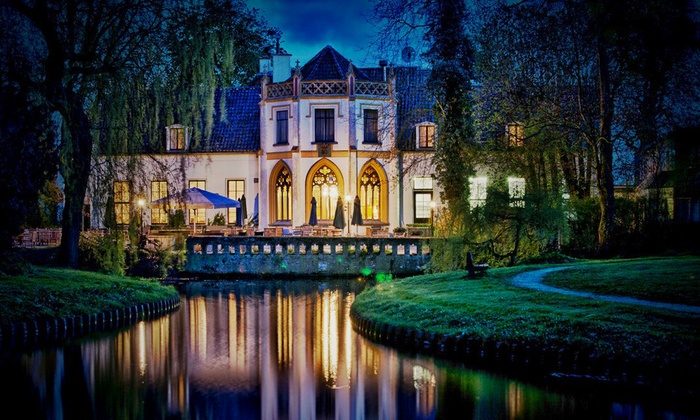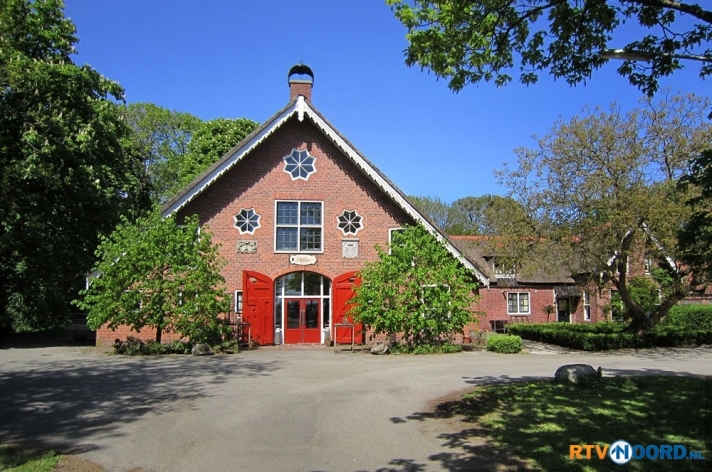Landgoed Ekenstein
Landgoed Ekenstein consists of a historical country house and a modern new building. All rooms are equipped with a shower and / or a bath tub, toilet, minibar, telephone, and television. Furthermore, Wifi is available in all rooms.

The Estate of Ekenstein is located in a wonderful English-style park, which was designed in 1827. Small paths along the river Dampsterdiep and the flora and fauna will invite you for a walk in the extensive park. For those who like to cycle, numerous bike paths allow to discover old villages and nature in the surroundings of Landgoed Ekenstein.

History
A “Borg”?
For those of you who associate the word “borg” with either a famous tennis player or the infamous Star-Trek-related raging race of robots, it might be disappointing (or reassuring) to know that “borg” actually has quite a different and rather unique meaning in the region of Groningen: It`s a small castle that used to signify status and power for its owners.
Having said this, it must be admitted that Ekenstein actually isn`t a borg. The borg Nittersum (built in 1669) at Stedum, by the hands of the Amsterdam-based architect Vingboons, is the last “real” borg built in the region of Groningen. Afterwards, only villas were built in this region. Most of these were built in the peat colonies, as resorts for the rich. Ekenstein (1648) is one of the two villas in this region (the other is Rusthoven, built in 1668, which can be found next to Ekenstein).

Dr. Johan Eeck, Founder of Ekenstein
Both villas were founded by the Eeck family. The founder of Ekenstein was dr. Johan Eeck, son of woodbuyer Tjaart Eeck and his wife Johanna Bernards from Farmsum. He was the first resident of the villa, which stayed in the family for 750 (!) years. Now, there are some interesting parallels between Johan Eeck and our current meeting. For example, Johan Eeck was an academic: He studied and got a Ph. D. from the Groningen Academy. Moreover, we strongly suspect that Johan Eeck would be supportive of a meeting on social change as he was very much into politics. Indeed, he became the secretary of the city Groningen, and later a member of the regional government. He also was mayor of the city Groningen, just as his sons Sicco and Johan became mayor later in time. In the Der Aa-church in the city of Groningen you can find their names on a memorial.
Ancient Nobility in Ekenstein
In the narrative of history, Ekenstein slowly moved into the hands of Dutch nobility who seemed to collect borgs and villas as some people would collect stamps or miniature trains. In 1754, Onno Joost Alberda (part of an ancient Dutch noble family, and already owner of a borg himself) bought Ekenstein. He was married to Anna Maria Hora, who owned the Ennemaborg at Midwolda. The new owner now called himself squire Onno Joost Alberda of Ekenstein.
At the end of the 18th century, Ekenstein was enlarged, decorated, and became surrounded with water. A memorial in one of the walls said: “Aedificata 1648, Ampliata 1772”, meaning “Founded 1648, enlarged 1772”. In 1827, the park was built along the lines of an English-style design by Lucas Pieter Roodbaard (who also designed parks in the city of Groningen). What now is Het Schathoes (the conference building) then actually was the farm. Willem Carel Alberda, in 1870, rebuilt the villa in a neo-gothic style, using parts of other borgs that had broken down. He built a knights` hall and had the family symbol of Mello Alberda, lord of Nijenstein, and of Joan Lewe of Middelstum inserted in the walls of Ekenstein. The windows in the library came from different churches in Groningen. Both Ekenstein`s present interior and exterior still mirror these changes.
Hotel, Restaurant, and Conference Site
In 1946, Ekenstein became property of the Appingedam region, and was set-up as a hotel. In 1957, the completely rebuilt Schathoes was used as a restaurant for groups. In 1989, the Pels family bought Landgoed Ekenstein. Thus, at an age of 350 years, it is now known as an excellent hotel, restaurant, and conference site.

